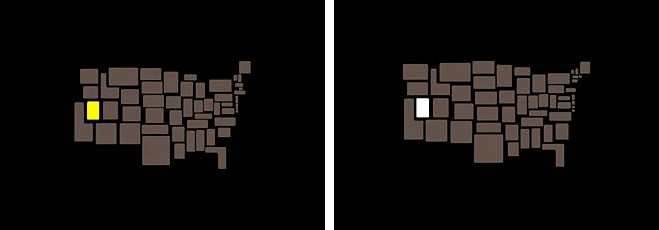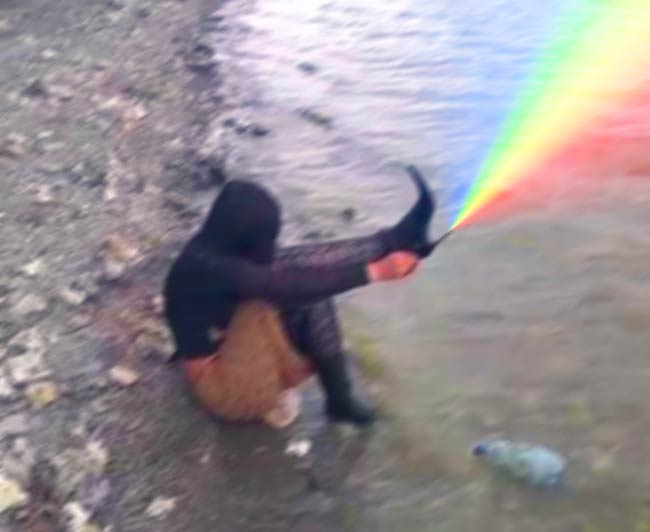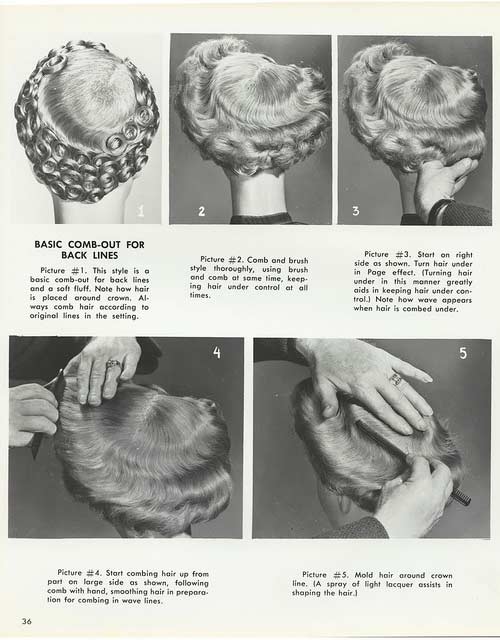visual design
From eighty six to ninety six the game went from sugar to shit

What is protected in the fashion world via the law and legislation, and what is not? Blakely: The main protection fashion designers have is over their trademark: their logo, their name. Source is protected; that’s why you hear about raids on pirates, who have made copies of Louis Vuitton bags, Canal St. in New York (NYC), Santee Alley in Los Angeles (LA). Have control of their name; have copyright protection of all the two-dimensional designs that go into the production of a garment. Textile design with a certain pattern–automatically qualify for copyright protection of that design. What they don’t own are any of the three-dimensional designs they end up creating. The stuff you see prancing out on a runway are actually up for grabs. Anybody can copy any aspects of any of those designs and get into no trouble with the law. Those designs are not particularly utilitarian–a word that comes up a lot in this industry–utilitarian stuff tends not to be protected legally. Something has to be considered a work of art in order to be considered for copyright protection. The courts decided long ago that they did not want any fashion designers owning such utilitarian designs as shirts, blouses, pants, belts, lapels. Don’t want somebody owning a monopoly–basically what a copyright gives you. (…)
Standard view would be: If I think my design is going to be copied, and copied quickly–which is what has happened to some extent because the copying ability better and the speed faster–then you’d think people would have less incentive to create new and better designs. That does not seem to be the case in the fashion industry. Why? Several reasons. One, from the beginning, copyright has both given artists an advantage and also taken something away. What it takes away from creators is access to other creative designs. Copyright holders may own what they have, but they cannot sample freely from others around them. Huge problem in the film and music industry. The fashion industry doesn’t suffer from this problem because every design that has ever been made is within a type of public domain. It is the raw material they can sample from to make their new work. Rich archive. The history of fashion, every hem length, every curved seam, every style is available to sample from. Not just stealing–sort of a curatorial responsibility. They are curating. Different gestures, different design elements from the past. Inevitably creating something new.
{ Johanna Blakley on Fashion and Intellectual Property | EconTalk | Continue reading }
photo { Bianca Jagger by Andy Warhol }
My pinky toe is pink because of a corn, how do I get it back to its original color?
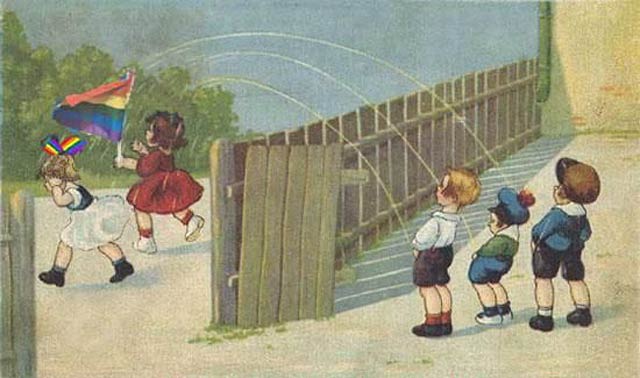
Social convention of 1884, when FDR was photographed at age 2 1/2, dictated that boys wore dresses until age 6 or 7, also the time of their first haircut. Franklin’s outfit was considered gender-neutral.
But nowadays people just have to know the sex of a baby or young child at first glance, says Jo B. Paoletti, a historian at the University of Maryland and author of Pink and Blue: Telling the Girls From the Boys in America. (…)
For centuries, children wore dainty white dresses up to age 6. (…) The march toward gender-specific clothes was neither linear nor rapid. Pink and blue arrived, along with other pastels, as colors for babies in the mid-19th century, yet the two colors were not promoted as gender signifiers until just before World War I—and even then, it took time for popular culture to sort things out.
And Muriel, I still hit all the same old haunts, and you follow me wherever I go
It has become harder to escape feeling like a tourist. Part of this is because cities are becoming more indistinguishable. In his essay “The City in the Age of Touristic Reproduction” philosopher Boris Groys notes how the local distinctions that once made foreign destinations exotic — the architectural or culinary peculiarities, the unique monuments, the cultural idiosyncrasies — have all become exportable signifiers, rapidly transmissible around the globe. This dissemination of local ideas, Groys argues, establishes a worldwide uniform city in places that were once distinct.
image { Olivier Laric, Versions, 2010 }
bonus (1:04 mark):
It’s a bluff, John, call it off

The principle of Feng shui - to arrange rooms and buildings in ways that are pleasing and health-giving - has popular appeal. Unfortunately, Feng shui’s scientific credentials are lacking, being based as it is on the ancient Chinese concept of Ch’i or life-force. The good news is that psychologically informed, evidence-based design is on the increase. Consider this new study by Sibel Dazhir and Marilyn Read, which has compared the effects of curvilinear (rounded) and rectilinear (straight-edged) furniture on people’s emotions. (…)
The two room versions full of curvilinear furniture provoked significantly higher pleasure and approach ratings from the students. (…) It’s worth considering whether rectilinear-themed rooms may have their own benefits for purposes other than relaxing and socializing.
interior { Chad McPhail }
‘What the public wants is the image of passion, not passion itself.’ –Roland Barthes
The art of the before-and-after photograph
In the first decade of the 20th century, Madame C.J. Walker — an African-American entrepreneur who made a fortune selling hair care products — demonstrated the dramatic results her wares could deliver via advertisements that used before-and-after photos of Madame Walker herself.
In Madame Walker’s “before” photo, her hair is short and kinky. In two “after” shots, it’s long, silky, and luxurious. In this regard, the sequence helped establish the parameters of the before-and-after format in the realm of advertising. The technique wasn’t just for showing incremental change. It was for showing fantastic, life-altering transformations, metamorphoses so amazing they’d be downright unbelievable were they not being depicted in a medium as ostensibly incapable of deceit as photography.
You checked with the bank, no? They never laid eyes on her, no? You still trustin’? Hot creepers!

Dazzle camouflage, also known as Razzle Dazzle or Dazzle painting, was a camouflage paint scheme used on ships, extensively during World War I and to a lesser extent in World War II. Credited to artist Norman Wilkinson, it consisted of a complex pattern of geometric shapes in contrasting colours, interrupting and intersecting each other.
{ Wikipedia | Continue reading | more photos }
Face-detection software is everywhere. Defeat it with some artfully-applied, avant-garde face makeup called CV Dazzle.
CV Dazzle is named after the ingenious warship-camouflage designs deployed during World War I. Rather than actually hiding military vessels, the bold, jagged paint jobs made it difficult for naval rangefinders to discern details about the ship’s size, heading, armament, and so forth. Or at least, that was the idea — unlike Harvey’s digital version, the original Dazzle’s effectiveness was never proven. Of course, CV Dazzle benefits from the fact that face-detection software is much stupider than WWI seamen: you only have to apply a few strokes of face-paint to confuse it, rather than coat your whole kisser.
‘It is a scientific fact that if you stay in California, you lose one point off your IQ every year.’ –Truman Capote

from Australia { Shaun Gladwell, Interceptor Surf Sequence, 2009 }
‘History is a set of lies that people have agreed upon.’ –Napoleon Bonaparte
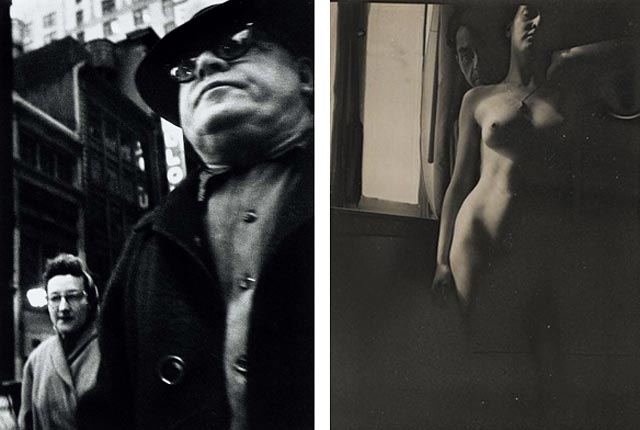
We modify our own opinions in line with what other people think, especially our friends and peers.
A problem for psychologists investigating the effect of peer influence is that it can be tricky to tell whether people are simply acquiescing in public, for show, or if their attitudes really have changed.
A new study by a team of psychologists at Harvard University has used an innovative mix of behavioural and brain-scan methods to show that peer influence really can change how people value something, in this case the attractiveness of a face.
photos { William Klein, Man Foreground, Woman Behind, 1955 | Right: Man Ray, Self-Portrait with Meret Oppenheim, 1933 }
‘Why must we proclaim so loudly and with such intensity what we are, what we want, and what we do not want?’ –Nietzsche

When adding up the benefits from three centuries of species discoveries, I’m tempted to start, and also stop, with Sir Hans Sloane.
A London physician and naturalist in the 18th century, he collected everything from insects to elephant tusks. And like a lot of naturalists, he was ridiculed for it, notably by his friend Horace Walpole, who scoffed at Sloane’s fondness for “sharks with one ear, and spiders as big as geese!” Sloane’s collections would in time give rise to the British Museum, the British Library, and the Natural History Museum, London.
Not a bad legacy for one lifetime. But it pales beside the result of a collecting trip to Jamaica, on which Sloane also invented milk chocolate.
We still scoff at naturalists today. We also tend to forget how much we benefit from their work. (…) Large swaths of what we now regard as basic medical knowledge came originally from naturalists.
photos { Simen Johan | Roxanne Jackson }
‘There’s no free will, but our mind is determined to wish this or that by a cause, which has also been determined by another cause, and this last by another cause, and so on to infinity.’ –Spinoza
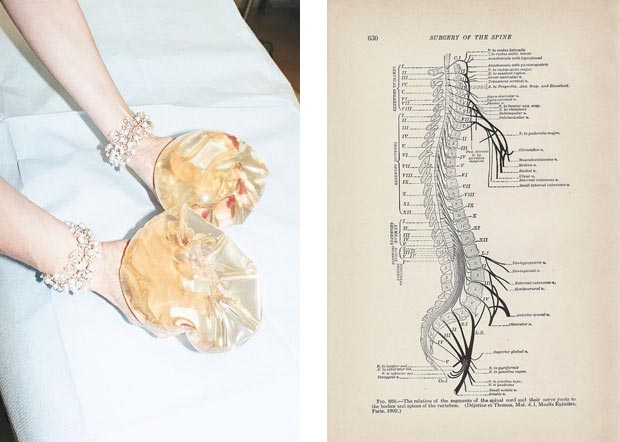
{ 1. Jurgen Teller | 2 }
All mussymussy calico blong
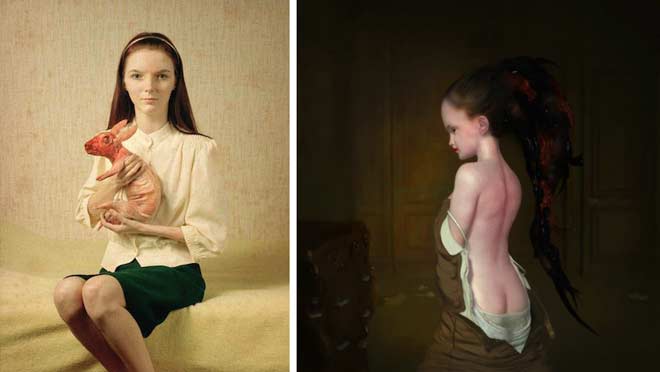
{ 1. Koen Hauser | 2. Ray Caesar }
New destinations are emerging as must-sees for travelers hoping to experience the “new new”
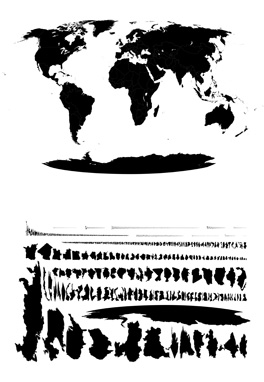
{ Armelle Caron, Le monde rangé, 2009 | Thanks Cole }
When you’ll next have the mind to retire to be wicked this is as dainty a way as any
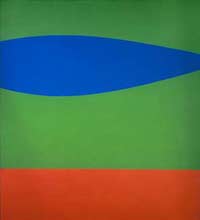
The English language makes a distinction between blue and green, but some languages do not. Of these, quite a number, mostly in Africa, do not distinguish blue from black either, while there are a handful of languages that do not distinguish blue from black but have a separate term for green.
painting { Ellsworth Kelly, Blue Green Red, 1962–63 }







